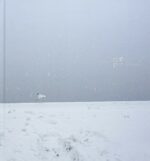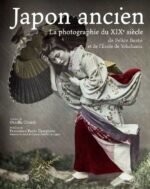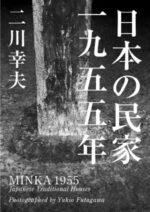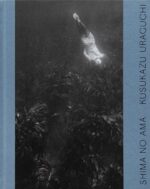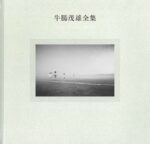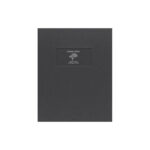Japon
-
Jiro Kochi : Ginza ; Through the eye of a Salaryman 1950-1990
68,00€1ère édition tirée à 500 exemplaires / 1st edition of 500 copies.
Pendant plus de quarante ans, jusqu’à sa retraite en 1990, Jiro Kochi a travaillé chez Tenshodo, une entreprise basée à Ginza, spécialisée dans la production et la vente de montres, de trains miniatures, de bijoux et d’autres objets. Passionné de photographie depuis l’enfance, Kochi emportait toujours un appareil photo — le plus souvent un Leica — sur le chemin du travail, photographiant Ginza durant ses trajets quotidiens.
For more than 40 years until his retirement in 1990, Jiro Kochi worked at Tenshodo, a Ginza-based business producing and selling watches, model trains, jewelry and other items. A photography enthusiast since his childhood, Kochi carried a camera (usually a Leica) with him on his way to work, photographing Ginza during his commute.
-
Akiko Sudo : Nanayuki
68,00€Exemplaire Signé / Signed Copy.
1ère édition tirée à 500 exemplaires / 1st edition of 500 copies.
À la fin de l’année 2011, la photographe japonaise Akiko Sudo s’est rendue à Aomori, dans le nord du Japon. Elle y est retournée par intermittence tout au long de l’hiver, jusqu’en janvier 2015, parcourant la préfecture à pied pour en photographier les paysages.
In late 2011, Japanese photographer Akiko Sudo visited Aomori, located in northern Japan. She returned intermittently throughout the winter until January 2025 to walk across and photograph the prefecture’s landscapes.
-
Tomoyuki Sakaguchi : Going Home
68,00€1ère édition tirée à 500 exemplaires / 1st edition of 500 copies.
Pour Going Home, Tomoyuki Sakaguchi a photographié des individus de nuit dans les paysages urbains de Tama New Town, vaste zone résidentielle située à l’ouest de Tokyo.
For “Going Home,” Tomoyuki Sakaguchi photographed individuals at night in the urban sceneries of Tama New Town, a large residential development area in western Tokyo.
-
Japon ancien ; La photographie du XIXe siècle de Felice Beato et de l’Ecole de Yokhohama
35,00€Compilation de plus de 300 photographies rares voire inédites représentant un Japon en pleine mutation. Colorés à la main, ces tirages à l’albumine révélant des scènes de la vie quotidienne entre tradition et modernité témoignent d’un savoir-faire mêlant art et technique. Des textes portant sur diverses thématiques (réflexion culturelle, anthropologie, entre autres) accompagnent les clichés
-
-
-
Koji Onaka : Matatabi
150,00€Livre Épuisé / Out of Print Book.
Exemplaire état Neuf / Copy as New.
1ère édition tirée à 1000 exemplaires / 1st edition printed on 1000 copies.
The town I had planned on visiting again one day disappeared one day
The town I was supposed to return to had become an unfamiliar town before I knew it
Person I thought that I could see anytime is no longer here
Photos are here for those that may be forgotten
-
Teresa Freitas : Flower(s) — Vol. 1 ; I Wonder Whose Skin This Crimson Flower Will Touch
50,00€Flower(s) — Vol. 1 (I wonder whose skin this crimson flower will touch) est une collection de livres sur les fleurs, par Teresa Freitas.
Le principe : un pays, une fleur, un livre.
Flower(s) — Vol. 1 ( I wonder whose skin this crimson flower will touch ) is a collection of books about flowers, by Teresa Freitas.
The principle: one country, one flower, one book.
-
Yukio Futagawa : Minka 1955 ; Japanese Traditional Houses
Transcendé par sa fascination pour l’architecture ancienne et d’une redécouverte personnelle de sa beauté à travers des matériaux tels que le bois, la pierre, la terre et le chaume, l’étudiant en architecture en herbe Yukio Futagawa est parti au milieu des années 1950 pour photographier les « minka », les maisons rurales traditionnelles du Japon.
Born from his fascination with ancient architecture and a personal rediscovery of its beauty through materials such as wood, stone, earth and thatch, the aspiring architecture student Yukio Futagawa set out in the mid-1950s to photograph ‘minka’, the traditional rural houses of Japan.
-
Rinko Kawauchi : Inhabiting Light ; Dialogue on the Edge of the Everyday World
Ce livre consiste en un dialogue entre texte et photo, dans lequel Rinko Kawauchi répond à un texte écrit par le philosophe Masatake Shinohara avec une photo, et Shinohara répond avec un texte. En écrivant, Shinohara dit qu’il est revenu à plusieurs reprises sur les mots de Kawauchi, ‘Ce qui compte en photographie, ce n’est pas ce que vous prenez, mais comment vous le prenez.’
-
Yasuhiro Ogawa : Lost in Kyoto (Avec 1 Tirage)
130,00€Édition avec un Tirage (12,7×17,8cm) Tamponné & Signé au crayon.
Les tirages sont en édition ouverte.Edition with a Print (5×7” inches) Stamped & Signed in pencil.
Prints are open edition.Exemplaire Signé / Signed Copy.
-
-
Kusukazu Uraguchi : Shima no ama
49,00€Publié à l’occasion de l’exposition aux Rencontres d’Arles du 1er juillet au 29 septembre 2024 (Abbaye de Montmajour).
Les ama nourrissent l’imaginaire nippon. Ces plongeuses en apnée, qui constituent des communautés exclusivement féminines, collectent ormeaux, coquillages et algues, se transmettant d’une génération à l’autre leur art et leur connaissance du milieu marin. Durant plus de trente ans, le photographe K. Uraguchi a documenté leur quotidien. Une sélection de ses clichés est ici présentée.
-
Yoshiki Hemmi : Listen to the Voices of the Shining Forest
45,00€Un paysage magnifique créé par le développement de la production d’énergie solaire, des panneaux solaires et la nature.
Une nouvelle relation entre les enjeux sociaux et l’expression photographique présentée par l’auteur, qui est également chercheur.
-
Shigeo Gocho : Works
Ce livre contient les œuvres publiées par le photographe japonais Shigeo Gocho (1946–1983) de son vivant. Arrangé dans l’ordre chronologique, le lecteur suit le travail de Gocho à partir de sa première série photographique de 1971 « Days » sur « Self and Others », « Familiar Street Scenes » et « Childhood », ainsi que les deux séries de peintures « Spiritual Travels » et « Memories of Water ».
This book contains the works published by the Japanese photographer Shigeo Gocho (1946–1983) during his lifetime. Arranged in chronological order, the reader follows Gocho’s work from his 1971 debut photography series “Days” on to “Self and Others,” “Familiar Street Scenes” and “Childhood,” as well as the two painting series “Spiritual Travels” and “Memories of Water.”
-
Michael Kenna : Hokkaido 2020 ; Collotype Portfolio
Exemplaire Signé / Signed Copy.
Livre Épuisé. Exemplaire Neuf.
Out of Print Book. Copy New.
Un portfolio de collotypes contenant sept des œuvres emblématiques de Michael Kenna (format des impressions : 20 x 25 cm).
A collotype portfolio containing seven of Michael Kenna’s signature works (Print size : 20 x 25 cm).
-
La photographie japonaise sous l’ère Meiji 1868-1912
35,00€L’art de la photographie réhaussée à l’aquarelle produite dans les studios photographiques au Japon dans les années 1868-1912.
-
Kenro Izu : Mono No Aware
Cette première édition est limitée à 1 000 exemplaires chaussés.
This first edition is limited to 1,000 slipcased copies.
Né à Osaka, au Japon, Kenro Izu a déménagé à New York à l’âge de 21 ans, ouvrant le studio Kenro Izu en 1974. Pendant cinquante ans, Kenro Izu a photographié des espaces sacrés à travers le monde et a examiné la « sacralité intérieure » chez ses sujets.
Born in Osaka, Japan, Kenro Izu moved to New York at the age of 21, opening Kenro Izu Studio in 1974. For fifty years, Kenro Izu has photographed sacred spaces around the world and has examined the “inner sacredness” within his subjects.
-
Ikko Narahara : Tokyo the ’50 / Blue Yokohama
Tokyo et Yokohama sont une autre facette du maître photographe japonais Ikko Narahara. Ce livre photo présente la série « Tokyo, les ‘50s” (publiée en 1996 sous forme de livre photo autonome) ainsi que plus de 40 images inédites de « Blue Yokohama » de Narahara.
Tokyo and Yokohama and another side of Japanese master photographer Ikko Narahara. This photobook presents the series “Tokyo, the ‘50s” (published in 1996 as a stand-alone photobook) together with more than 40 previously unpublished images from Narahara’s “Blue Yokohama.”


